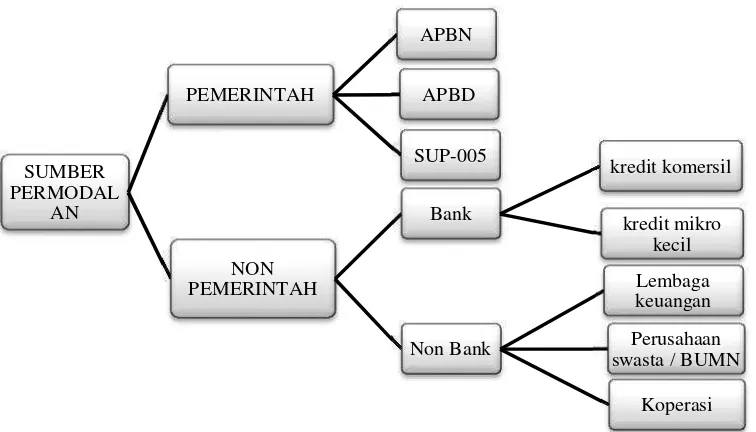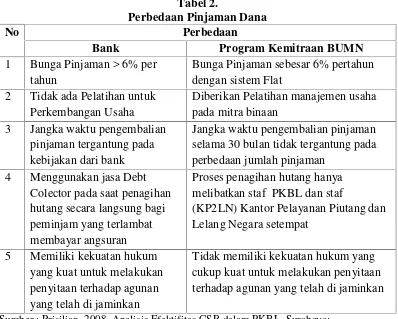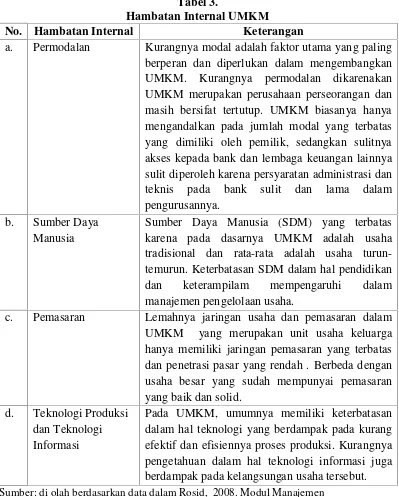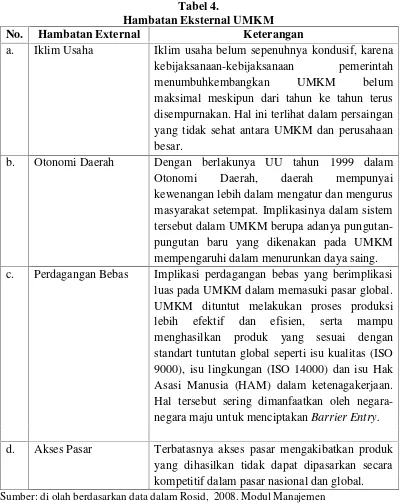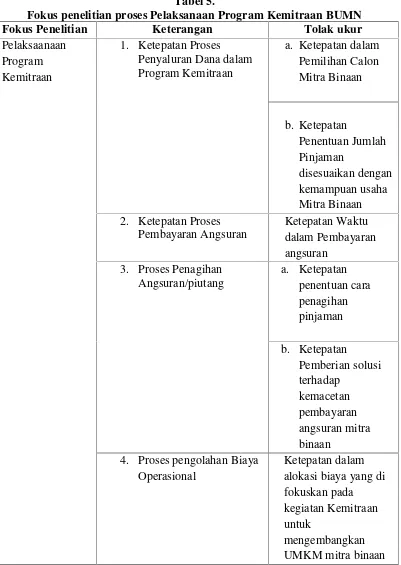Informasi Dokumen
- Penulis:
- Muhammad Syoudgi
- Sekolah: Universitas Mercu Buana
- Mata Pelajaran: Management
- Topik: Analysis Effectiveness Of Partnership Program BUMN In Mikro Small And Medium Enterprise Growth
- Tipe: thesis
- Tahun: 2023
- Kota: Lampung
Ringkasan Dokumen
I. INTRODUCTION
This section introduces the significance of State-Owned Enterprises (BUMN) in Indonesia, particularly their role in empowering Micro, Small, and Medium Enterprises (UMKM). It emphasizes the strategic responsibilities of BUMN in fostering a conducive business environment for UMKM, as mandated by the law. The background highlights the importance of UMKM in national economic development, as they constitute the majority of business units in Indonesia and play a critical role in job creation. The challenges faced by UMKM, such as limited access to capital and technology, are also discussed, emphasizing the need for effective partnership programs.
II. Background
This subsection elaborates on the role of BUMN in supporting UMKM, referring to various laws that outline the responsibilities of BUMN in fostering a healthy business climate. It discusses the criteria for UMKM in Indonesia and their substantial contribution to the economy. The section also addresses the challenges faced by UMKM, highlighting issues such as low productivity, limited access to financing, and inadequate human resources. The need for BUMN's involvement in enhancing UMKM's capabilities through partnership programs is emphasized.
III. Problem Identification
This section identifies the complex challenges faced by UMKM in their development, categorizing them into internal and external obstacles. Internal challenges include limited capital, inadequate human resources, weak marketing networks, and technological constraints. External challenges encompass unfavorable business climates, regional autonomy issues, and limited market access. The identification of these problems underlines the necessity for effective partnership programs that can provide both financial support and capacity building for UMKM.
IV. Research Questions
This subsection outlines the research questions guiding the study, focusing on the effectiveness of the BUMN partnership program in fostering UMKM growth. It seeks to explore the factors that hinder and support the program's effectiveness. By addressing these questions, the study aims to provide insights into the operational dynamics of the partnership program and its impact on the development of UMKM.
V. Research Objectives
The objectives of the research are clearly defined in this section. It aims to describe the effectiveness of the BUMN partnership program in enhancing UMKM growth, identify the factors that impede the program's success, and explore the supportive elements that contribute to its effectiveness. These objectives align with the overarching goal of understanding how BUMN can better support UMKM through strategic partnerships.
VI. Significance of the Research
This section discusses the practical and theoretical significance of the research. Practically, it aims to enrich the academic discourse on business administration and contribute to the understanding of partnership programs in the context of UMKM. Theoretically, it serves as a reference for future studies on the effectiveness of BUMN partnership programs and offers insights for UMKM stakeholders regarding the benefits of such partnerships.
VII. LITERATURE REVIEW
The literature review provides a comprehensive overview of the effectiveness of partnership programs, defining key concepts such as effectiveness, Corporate Social Responsibility (CSR), and the specific framework of the BUMN partnership program. It discusses various theoretical perspectives on effectiveness, emphasizing the importance of achieving predetermined goals and the impact of partnership programs on UMKM. The review also differentiates between CSR practices in private companies and the BUMN's PKBL program, highlighting their unique roles in supporting UMKM development.
VIII. Definition of Effectiveness
This subsection delves into the concept of effectiveness, outlining various definitions provided by scholars. Effectiveness is described as the degree to which predetermined goals are achieved, with an emphasis on the importance of measuring outcomes against set objectives. Theoretical perspectives on effectiveness are discussed, providing a foundation for evaluating the BUMN partnership program's success in fostering UMKM growth.
IX. CSR vs
This section contrasts the concepts of Corporate Social Responsibility (CSR) and the BUMN's Program Kemitraan dan Bina Lingkungan (PKBL). It highlights the similarities and differences in their objectives and funding mechanisms. While both aim to support community development, PKBL specifically focuses on enhancing the capabilities of UMKM through targeted financial assistance and training, utilizing a portion of BUMN profits. This distinction is crucial for understanding the operational context of the partnership program.
X. Objectives of the PKBL Program
The objectives of the PKBL program are outlined in this section, emphasizing its role in promoting economic growth and equitable development. The program aims to empower UMKM and foster sustainable community development through financial support and capacity-building initiatives. By clarifying these objectives, the section sets the stage for analyzing the program's effectiveness in achieving its intended outcomes.
XI. Benefits of the Partnership Program
This subsection discusses the benefits of the BUMN partnership program for UMKM, including access to low-interest loans, training, and technical assistance. It emphasizes the program's role in enhancing the productivity and competitiveness of UMKM, ultimately contributing to broader economic growth. The benefits are framed within the context of the challenges faced by UMKM, reinforcing the necessity of such support mechanisms.
XII. Challenges and Opportunities
This section examines the challenges faced by the BUMN partnership program in effectively supporting UMKM. It identifies barriers such as limited awareness among UMKM about available resources, bureaucratic hurdles, and the need for ongoing training and support. Conversely, it also highlights opportunities for improvement, including enhancing communication strategies and tailoring support to meet the specific needs of UMKM. This analysis is critical for informing future program enhancements.
XIII. METHODOLOGY
The methodology section outlines the research design, including the qualitative approach utilized to gather data through interviews, observations, and document analysis. It details the selection of participants, including BUMN staff and UMKM representatives, and explains how the data collection methods align with the research objectives. This section is vital for establishing the credibility and reliability of the research findings.
XIV. Data Collection Techniques
This subsection elaborates on the specific data collection techniques employed in the study, including semi-structured interviews and participant observations. It emphasizes the importance of triangulation in enhancing the validity of the findings and provides insights into how the data collection process was conducted to ensure comprehensive coverage of the research questions.
XV. Data Analysis
In this section, the data analysis methods are discussed, focusing on thematic analysis to identify patterns and themes within the qualitative data. The process of coding and categorizing data to derive meaningful insights is explained, highlighting how the analysis aligns with the research objectives and contributes to understanding the effectiveness of the partnership program.
XVI. FINDINGS AND DISCUSSION
The findings section presents the results of the research, detailing the effectiveness of the BUMN partnership program in supporting UMKM growth. It discusses the key indicators of effectiveness, including the accuracy of program implementation and the growth of UMKM. The section also explores the factors that facilitate and hinder the program's success, providing a nuanced understanding of its operational dynamics.
XVII. Effectiveness of the Partnership Program
This subsection provides a detailed analysis of the effectiveness of the partnership program, supported by qualitative data from interviews and observations. It highlights the positive outcomes achieved by UMKM participants and discusses how the program has contributed to their growth and sustainability. The analysis emphasizes the alignment of program outcomes with the established objectives, reinforcing the program's overall effectiveness.
XVIII. Factors Influencing Effectiveness
This section examines the various factors that influence the effectiveness of the partnership program, including organizational support, participant engagement, and external economic conditions. It discusses how these factors interact to impact program outcomes and identifies areas for improvement to enhance the program's effectiveness in the future.
XIX. CONCLUSIONS AND RECOMMENDATIONS
The conclusion summarizes the key findings of the research, reiterating the effectiveness of the BUMN partnership program in supporting UMKM growth. It emphasizes the importance of continuous evaluation and adaptation of the program to meet the evolving needs of UMKM. Recommendations for enhancing the program's effectiveness are provided, including increased training on information technology and regular financial reporting by UMKM participants.
XX. Recommendations for Future Research
This subsection outlines suggestions for future research, encouraging further exploration of the long-term impacts of the partnership program on UMKM sustainability. It highlights the need for longitudinal studies to assess the ongoing effectiveness of the program and its adaptability to changing economic conditions.

